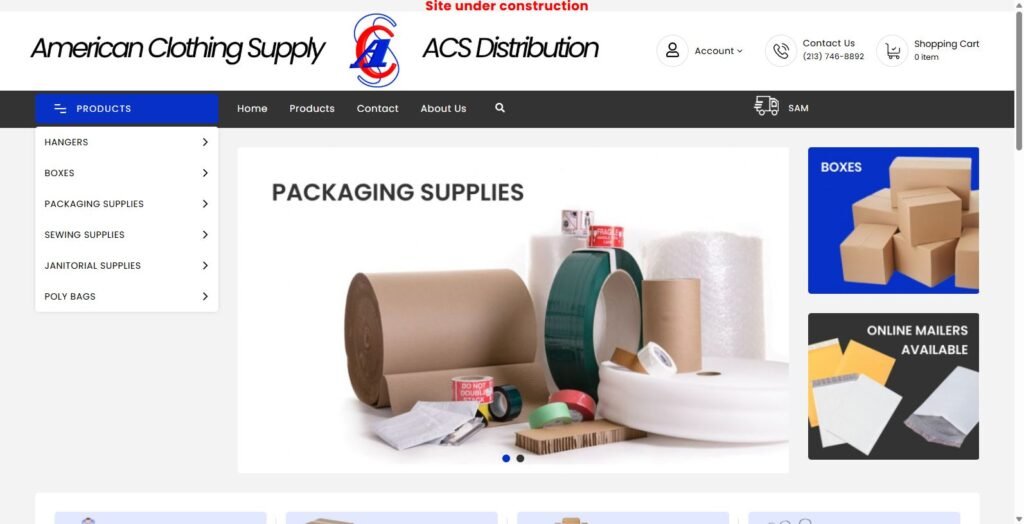Introduction: Why a Simple Fold Can Transform Your Space and Mind
Opening a drawer to a jumble of clothes is a frustrating start to any day. That feeling of not being able to find what you need when surrounded by clutter can weigh on your mind.
We want to show you that learning how to fold clothes is the key to fixing this problem. It’s a simple skill that can transform messy drawers into organized spaces. This isn’t just about fighting clutter – it’s about saving time, making your clothes last longer, and creating calm in your personal space.
This is more than just tidy—it’s a system for a calmer life. In this guide, we’ll walk you through everything from quick basic folds to advanced methods that will change how you see your wardrobe.
The Foundation: How to Fold a T-Shirt Perfectly in 30 Seconds

Before we searcch advannced organisation , let ‘s overcome a Basic attainment . Ths flat–fold is the perfect sttarting pointdness . It ‘s quick , easy to memorise , and paragon for heapp dress Neatly on shelves .
This method gives you a quick win and builds the confidence you need to tackle your entire wardrobe. Grab a t-shirt and let’s fold it in under a minute.
(For the clearest possible instructions, follow these steps alongside a visual guide, like a short video or a step-by-step image gallery.)
Here is the simplest way to get a perfectly folded shirt every time:
- Lay it Flat: Place the t-shirt face down on a clean, flat surface like a bed or table. Smooth out any wrinkles with your hands.
- First Fold: Imagine a line running down the center of the shirt. Take one side of the t-shirt and fold it into that imaginary centerline. Neatly fold the sleeve back onto the folded section.
- Second Fold: Repeat the exact same process with the other side. You should now have a long, neat rectangle.
- Final Fold: Fold the bottom hem of the rectangle up to the collar. You’re left with a clean, stackable square ready for the shelf or a shallow drawer.
The Space-Saving Revolution: Mastering the KonMari Method™
If you want to maximize drawer space and see everything you own at a glance, learn the KonMari Method™. Made famous by Marie Kondo, this approach changes folding from a chore into a mindful way of caring for your things.
The core idea is simple but powerful: fold items into small rectangles that can stand upright on their own. When you arrange these items in your drawer, you create a filing system for your clothes. This vertical storage is how you fit more in drawers while seeing every single item. You can find more details in the official KonMari Method™.
This method respects your clothes by giving each item its own space and prevents creasing from stacking.
The most surprising part isn’t just the space saved, but how satisfying it is to see every shirt standing neatly in a row. It solves the “I have nothing to wear” problem completely.
Here’s how to fold a t-shirt using the KonMari Method™:
- Lay it Flat: Start with the t-shirt face down on a flat surface, smoothed out.
- Fold to a Rectangle: Fold the left side towards the center. Fold the sleeve back and away from the center. Repeat on the right side. You should have a long rectangle, just like in the basic fold.
- The First Half-Fold: Take the collar-end of the rectangle and fold it down towards the bottom hem, stopping about an inch away from the bottom. This small gap is important for the final step.
- Fold Into Thirds: From the folded end, fold the shape in thirds. Fold it once, and then once more.
- The Final Tuck and Stand: The final fold should create a small, compact packet. Stand it up on its thickest edge. If it stands on its own, you’ve done it perfectly. If it falls over, adjust your folds.
Once you have folded all your items, arrange them in your drawer vertically from front to back, like files in a cabinet.
KonMari vs. Traditional Flat-Stacking: A Practical Comparison

The “good” closee method reckon on your place , yourdress , and what matter most to you . Do you nave deep shorts or shhoal ledge ? Do you worry more about project everything or close rapidly ?
To help you decide which system works for you, here are the key differences between the KonMari vertical fold and traditional flat-stacking:
| Feature | KonMari Vertical Fold | Traditional Flat Stack |
|---|---|---|
| Space Efficiency | Excellent for deep drawers; maximizes vertical space. | Good for shallow shelves; can lead to wasted space. |
| Visibility | Excellent; see every item at a glance. | Poor; you can only see the top item in the stack. |
| Accessibility | Excellent; remove one item without disrupting others. | Fair; removing a bottom item can topple the pile. |
| Wrinkle Prevention | Very Good; fewer pressure points on the fabric. | Fair; weight of the stack can cause deep creases. |
Many people find a mixed approach works best. You might use vertical folding for t-shirts and underwear in drawers, and traditional stacking for bulky sweaters on a closet shelf.
An Item-by-Item Guide: How to Fold Your Entire Wardrobe

Once you’ve mastered the t-shirt, you can apply similar ideas to almost everything in your closet. Organizing your entire wardrobe becomes possible when you know the right techniques for each type of clothing.
These methods protect the fabric, save space, and make every item easy to find. Many follow the same principles as expert-approved organizing techniques that help maintain the shape and quality of your clothes.
Let’s break it down, item by item.
How to Fold Sweaters (to Avoid Stretching)
Never hang your heavy sweaters, as this can stretch and damage the shoulders. Folding preserves their shape.
- Lay Flat: Place the sweater face down on a flat surface.
- Fold Arms: Fold the arms horizontally across the back of the sweater, creating a straight line down each side.
- Fold in Half: Fold the sweater in half from bottom to top. For bulky sweaters, you can fold it into thirds to create a more compact shape for your shelf.
How to Fold Pants and Jeans
Folding pants is simple and creates a uniform shape perfect for stacking or filing vertically in a drawer.
- Lay Flat and Halve: Lay the pants on a flat surface. Fold one leg directly on top of the other. Smooth them out.
- Fold the Crotch: Tuck the crotch point inward to create a straight rectangular shape. This prevents awkward lumps.
- Fold into Thirds: Fold the rectangle in thirds, from the bottom up to the top. This creates a compact bundle that can stand or stack neatly.
How to Fold Socks (and Keep Pairs Together)
Don’t ball your socks! Tucking one sock into the other stretches the elastic and shortens its life. A simple fold keeps pairs together without causing damage.
- Pair Up: Lay one sock directly on top of the other.
- Fold in Half or Thirds: For ankle socks, simply fold them in half. For longer crew socks, fold into thirds.
- Store Vertically: Line them up in a small bin or drawer divider so you can see every pair.
How to Fold Hoodies and Bulky Items
Hoodies can take up too much space, but their bulk is easily managed with the right fold.
- Prepare the Hoodie: Zip it up and lay it face down.
- Fold the Hood: First, fold the hood down neatly against the back of the hoodie.
- Create the Rectangle: Fold the arms in toward the center. Then, fold the sides in to create a long rectangle, just as you would with a t-shirt.
- Final Fold: Fold the rectangle in half or thirds, depending on its size. This compact shape can go on a shelf or in a deep bin.
Beyond the Drawer: Folding for Travel and Special Cases

Your new folding skills work beyond home organization. They can make other parts of your life better, especially when traveling.
Here are two special techniques: one for packing a suitcase well and another for store-perfect folding.
Folding for a Suitcase: The Ranger Roll
The Ranger Roll is a military technique designed to save space and prevent wrinkles. It works great for soft clothes like t-shirts, pants, and underwear. The ranger roll is perfect for packing backpacks and duffel bags, fitting much more than you’d expect.
- How it works: Fold the item into a small rectangle, then roll it very tightly, tucking one end into the other to secure it.
- Benefits: It creates compact rolls of clothing that minimize wrinkles and pack tightly into a suitcase or backpack.
- Pro Tip: Use packing cubes to group your rolled items by type for better organization.
Using a Folding Board for Uniform Results
Wonder how stores get those perfect stacks of shirts? They use a folding board.
- What it is: A simple tool with hinged panels, usually made of plastic or cardboard.
- Who it’s for: Anyone who wants perfectly uniform folds, especially for clothes stored on open shelves.
- How it works: You place the shirt on the board and flip the panels in sequence. It creates a perfect, identical fold every time. This is more about look than saving space.
Conclusion: Fold with Purpose, Live with Clarity
Learning how to fold clothes isn’t just about tidy drawers. It’s an investment in yourself that saves time, reduces stress, and brings order to your daily life. By turning this simple chore into a mindful practice, you create a space that feels calm and organized. Start with just one drawer today and see the difference for yourself.
FAQs
- What is the fastest way to fold a t-shirt?
The fastest method is the basic flat-fold technique that takes just 30 seconds: lay the shirt face down, fold sides to center, fold sleeves back, then fold bottom to top. - How is the KonMari method different from traditional folding?
The KonMari method creates standing rectangles for vertical storage, allowing you to see all items at once and access them without disturbing others, while traditional folding stacks items horizontally. - How should I fold sweaters to prevent stretching?
Lay the sweater face down, fold arms horizontally across the back creating straight lines, then fold in half from bottom to top (or in thirds for bulky sweaters). - What’s the best way to fold clothes for travel in 2025?
The Ranger Roll technique is best for travel: fold items into small rectangles, roll tightly, then tuck one end into the other to secure. This maximizes space and minimizes wrinkles. - Why shouldn’t I ball up my socks when folding them?
Balling socks by tucking one into the other stretches the elastic and shortens their lifespan. Instead, lay one sock on top of the other and fold in half or thirds.








